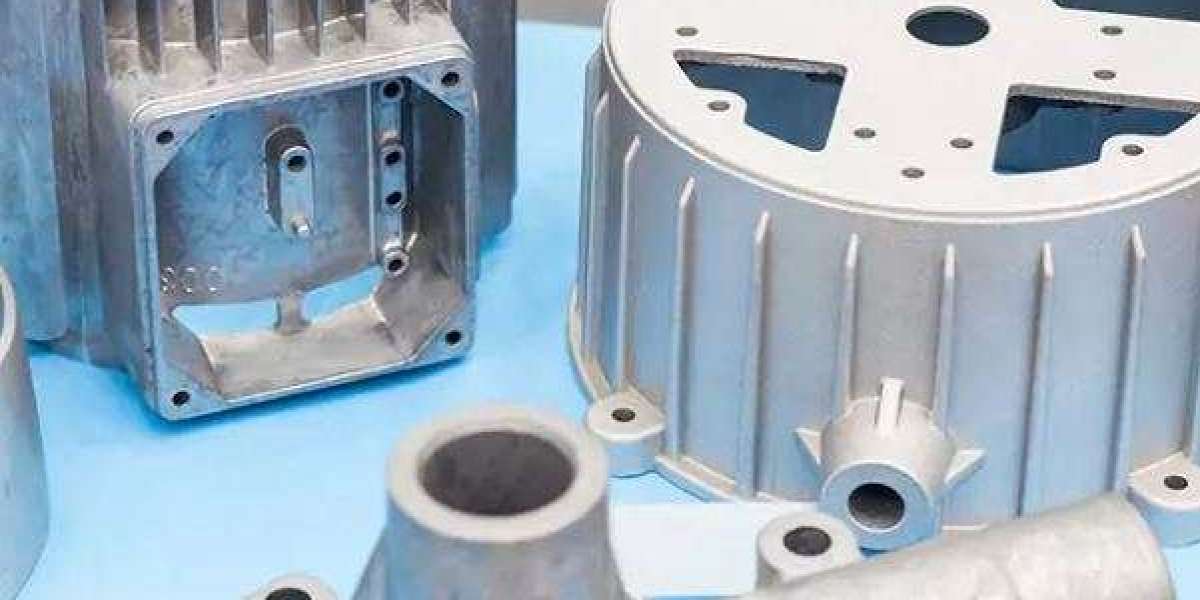Introduction: The Cornerstone of Precision Manufacturing
In the realm of modern manufacturing, aluminum die casting stands as a testament to human ingenuity and technological prowess. At the heart of this process lies an unsung hero: the die casting mold. These precision-engineered tools are the silent architects of countless products we encounter in our daily lives, from automotive components to consumer electronics.
This comprehensive exploration delves into the intricate world of aluminum die casting molds, unraveling their complexities, design considerations, and the crucial role they play in shaping the future of manufacturing. As we embark on this journey, we'll discover why die casting mold making is not just a process, but an art form that demands precision, expertise, and innovation.

The Anatomy of an Aluminum Die Casting Mold
To appreciate the complexity of die casting mold making, we must first understand their structure:
- 1. Core and Cavity: The heart of the mold, defining the part's shape.
- 2. Runners and Gates: Channels guiding molten aluminum into the cavity.
- 3. Ejector System: Mechanisms to remove the solidified part.
- 4. Cooling Channels: Networks ensuring optimal thermal management.
- 5. Venting System: Pathways for air and gas evacuation.
Material Considerations: The Foundation of Durability
Selecting the right material for an aluminum die casting mold is crucial. The most common choices include:
| Material | Properties | Best For |
|---|---|---|
| H13 Tool Steel | High hot hardness, wear resistance | High-volume production |
| 4140 Steel | Good machinability, toughness | Medium-volume production |
| Maraging Steel | Exceptional strength, toughness | Complex, high-stress molds |
The Design Process: Where Art Meets Engineering
Designing an aluminum die casting mold is a multifaceted process that requires a blend of artistic vision and engineering precision. Key steps include:
- Concept Development: Translating the part design into a mold concept.
- 3D Modeling: Creating detailed digital representations of the mold.
- Simulation and Analysis: Using software to predict and optimize mold performance.
- Prototyping: Producing test molds to validate designs.
- Refinement: Iterative improvements based on testing results.
Advanced Technologies in Mold Making
The field of die casting service for mold production is constantly evolving, with new technologies pushing the boundaries of what's possible:
- 5-Axis CNC Machining: Enables complex geometries and precise finishes.
- 3D Printing: Allows for rapid prototyping and conformal cooling channels.
- EDM (Electrical Discharge Machining): Creates intricate features with high precision.
- Laser Texturing: Adds fine surface details and improves part release.
Thermal Management: The Key to Longevity
Effective thermal management is crucial for the longevity and performance of aluminum die casting molds. Strategies include:
- Conformal Cooling Channels: Follow the contours of the mold cavity for uniform cooling.
- Thermal Imaging: Identifies hotspots and optimizes cooling system design.
- Advanced Coolants: Use of high-performance fluids to enhance heat transfer.
- Insulating Coatings: Applied to strategic areas to control heat flow.
Surface Treatments: Enhancing Performance
Various surface treatments can significantly improve mold performance and lifespan:
| Treatment | Benefits |
|---|---|
| Nitriding | Increases surface hardness and wear resistance |
| PVD Coating | Improves lubricity and reduces aluminum sticking |
| Shot Peening | Enhances fatigue strength and stress resistance |
Quality Control: Ensuring Precision
Maintaining the highest standards of quality is paramount in aluminum die casting mold production. Key quality control measures include:
- Dimensional Inspection: Using CMM (Coordinate Measuring Machines) for accuracy.
- Material Testing: Ensuring mold materials meet specifications.
- Non-Destructive Testing: X-ray and ultrasonic inspections for internal defects.
- Trial Runs: Producing sample parts to validate mold performance.
- Documentation: Maintaining comprehensive records for traceability.
Maintenance and Longevity
Proper maintenance is crucial for extending the life of aluminum die casting molds:
- Regular Cleaning: Removing residue and contaminants.
- Lubrication: Applying release agents to prevent sticking.
- Preventive Repairs: Addressing wear before it leads to failures.
- Monitoring: Tracking mold performance and anticipating maintenance needs.
Environmental Considerations
As sustainability becomes increasingly important, the die casting industry is adapting:
- Energy Efficiency: Optimizing mold designs for reduced energy consumption.
- Recycling: Using recycled materials in mold production where possible.
- Waste Reduction: Implementing lean manufacturing principles to minimize waste.
- Green Machining: Adopting eco-friendly cutting fluids and processes.
The Future of Aluminum Die Casting Molds
The future of aluminum die casting molds is bright, with several exciting trends on the horizon:
- AI-Driven Design: Leveraging artificial intelligence for optimized mold designs.
- Smart Molds: Integrating sensors for real-time monitoring and adaptive control.
- Additive Manufacturing: Expanding use of 3D printing for mold components.
- Nano-Coatings: Developing advanced surface treatments at the nanoscale.
- Hybrid Materials: Combining different materials for enhanced mold performance.
Conclusion: The Art of Precision
The world of aluminum die casting molds is a fascinating intersection of art, science, and engineering. As we've explored, the creation of these precision tools involves a complex interplay of material science, design principles, and cutting-edge technologies. From the initial concept to the final product, every step in the process demands attention to detail and a commitment to excellence.
As manufacturing continues to evolve, the role of die casting molds in shaping our world cannot be overstated. Companies like diecasting-mould is the best die casting mold manufacturer are at the forefront of this evolution, pushing the boundaries of what's possible in precision manufacturing.
The future of aluminum die casting service for molds is bright, with innovations in materials, design, and technology promising even greater levels of precision, efficiency, and sustainability. As we look ahead, it's clear that these unsung heroes of manufacturing will continue to play a crucial role in shaping the products of tomorrow, driving innovation across industries and contributing to a more advanced and sustainable world.








